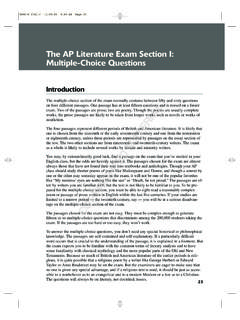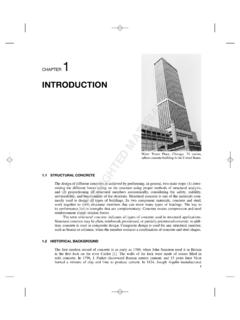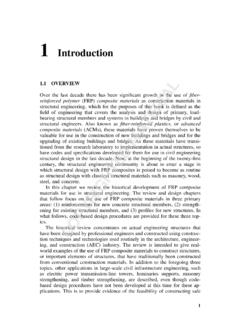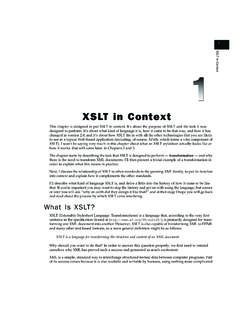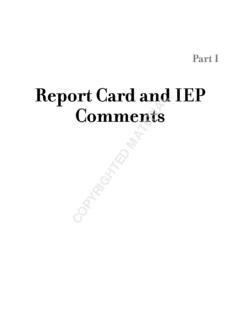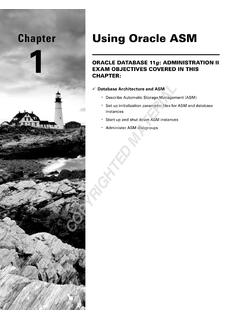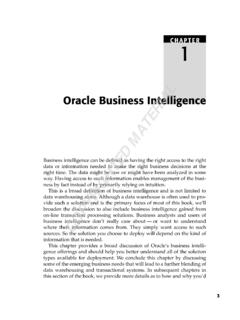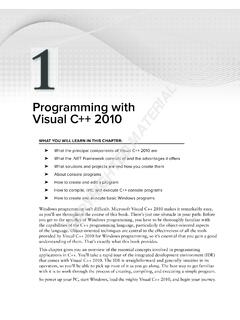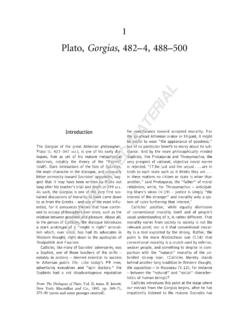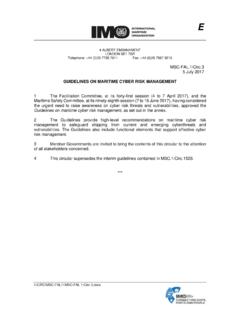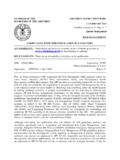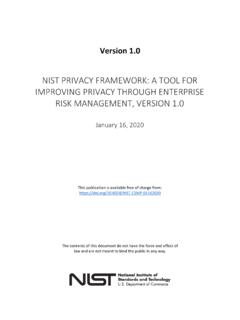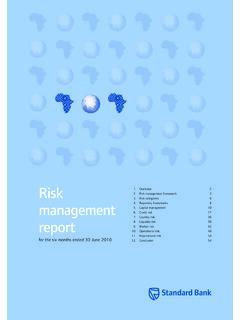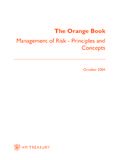Transcription of CHAPTER 1 What Is Financial Risk Management?
1 1 After reading this CHAPTER you will be able to Describe the Financial risk management process Identify key factors that affect interest rates, exchange rates,and commodity prices Appreciate the impact of history on Financial marketsAlthough Financial risk has increased significantly in recent years,risk and risk management are not contemporary issues. The resultof increasingly global markets is that risk may originate with eventsthousands of miles away that have nothing to do with the domesticmarket. Information is available instantaneously, which means thatchange, and subsequent market reactions, occur very economic climate and markets can be affected very quickly bychanges in exchange rates, interest rates, and commodity prices. Counter-parties can rapidly become problematic. As a result, it is important toensure Financial risks are identified and managed appropriately.
2 Prepara-tion is a key component of risk Is Risk?Risk provides the basis for opportunity. The terms risk and exposurehavesubtle differences in their meaning. Risk refers to the probability of loss, CHAPTER 1 What Is Financial RiskManagement? 3/3/05 6:35 AM Page 1 COPYRIGHTED MATERIAL while exposure is the possibility of loss, although they are often usedinterchangeably. Risk arises as a result of to Financial markets affects most organizations, either directlyor an organization has Financial market exposure, thereis a possibility of loss but also an opportunity for gain or profit. Financialmarket exposure may provide strategic or competitive is the likelihood of losses resulting from events such as changesin market prices. Events with a low probability of occurring, but that mayresult in a high loss, are particularly troublesome because they are oftennot anticipated.
3 Put another way, risk is the probable variability of it is not always possible or desirable to eliminate risk, under-standing it is an important step in determining how to manage exposures and risks forms the basis for an appropriate finan-cial risk management Does Financial Risk Arise? Financial risk arises through countless transactions of a Financial nature,including sales and purchases, investments and loans, and various otherbusiness activities. It can arise as a result of legal transactions, new proj-ects, mergers and acquisitions, debt financing, the energy component ofcosts, or through the activities of management , stakeholders, competi-tors, foreign governments, or Financial prices change dramatically, it can increase costs,reduce revenues, or otherwise adversely impact the profitability of anorganization.
4 Financial fluctuations may make it more difficult to planand budget, price goods and services, and allocate Financial Risk ManagementPotential Size of LossPotential for Large LossPotential for Small LossProbability of LossHigh Probability of OccurrenceLow Probability of 3/3/05 6:35 AM Page 2 There are three main sources of Financial risks arising from an organization s exposure to changesin market prices, such as interest rates, exchange rates, and com-modity prices risks arising from the actions of, and transactions with,other organizations such as vendors, customers, and counterpartiesin derivatives transactions risks resulting from internal actions or failures of the organ-ization, particularly people, processes, and systems These are discussed in more detail in subsequent Is Financial Risk management ?
5 Financial risk management is a process to deal with the uncertaintiesresulting from Financial markets. It involves assessing the Financial risksfacing an organization and developing management strategies consistentwith internal priorities and policies. Addressing Financial risks proac-tively may provide an organization with a competitive advantage. It alsoensures that management , operational staff, stakeholders, and the boardof directors are in agreement on key issues of Financial risk necessitates making organizational decisionsabout risks that are acceptable versus those that are not. The passivestrategy of taking no action is the acceptance of all risks by manage Financial risk using a variety of strategies andproducts. It is important to understand how these products and strate-gies work to reduce risk within the context of the organization s risktolerance and for risk management often involve derivatives.
6 Derivativesare traded widely among Financial institutions and on organized value of derivatives contracts, such as futures, forwards, options, and3 What Is Financial Risk management ? 3/3/05 6:35 AM Page 3swaps, is derived from the price of the underlying asset. Derivativestrade on interest rates, exchange rates, commodities, equity and fixedincome securities, credit, and even products and strategies used by market participants to managefinancial risk are the same ones used by speculators to increase leverage andrisk. Although it can be argued that widespread use of derivatives increasesrisk, the existence of derivatives enables those who wish to reduce risk topass it along to those who seek risk and its associated ability to estimate the likelihood of a Financial loss is highly desir-able. However, standard theories of probability often fail in the analysis offinancial markets.
7 risks usually do not exist in isolation, and the interac-tions of several exposures may have to be considered in developing anunderstanding of how Financial risk arises. Sometimes, these interactionsare difficult to forecast, since they ultimately depend on human process of Financial risk management is an ongoing one. Strategiesneed to be implemented and refined as the market and requirementschange. Refinements may reflect changing expectations about marketrates, changes to the business environment, or changing internationalpolitical conditions, for example. In general, the process can be summa-rized as follows:4 ESSENTIALSof Financial Risk ManagementNotable Quote Whether we like it or not, mankind now has a completely inte-grated, international Financial and informational marketplacecapable of moving money and ideas to any place on this planetin minutes.
8 Source: Walter Wriston of Citibank, in a speech to the InternationalMonetar y Conference, London, June 11, THE REAL 3/3/05 6:35 AM Page 45 What Is Financial Risk management ? Identify and prioritize key Financial risks . Determine an appropriate level of risk tolerance. Implement risk management strategy in accordance with policy. Measure, report, monitor, and refine as many years, the riskiness of an asset was assessed based only on thevariability of its returns. In contrast, modern portfolio theory considersnot only an asset s riskiness, but also its contribution to the overall risk-iness of the portfolio to which it is added. Organizations may have anopportunity to reduce risk as a result of risk portfolio management terms, the addition of individual compo-nents to a portfolio provides opportunities for diversification, withinlimits.
9 A diversified portfolio contains assets whose returns are dissimilar,in other words, weakly or negatively correlated with one another. It is useful to think of the exposures of an organization as a portfolio and consider the impact of changes or additions on the potential riskof the is an important tool in managing Financial among counterparties may reduce the risk that unex-pected events adversely impact the organization through among investment assets reduces the magnitude of lossif one issuer fails. Diversification of customers, suppliers, and financingsources reduces the possibility that an organization will have its businessadversely affected by changes outside management s control. Althoughthe risk of loss still exists, diversification may reduce the opportunityfor large adverse 3/3/05 6:35 AM Page 56 ESSENTIALSof Financial Risk ManagementRisk management ProcessThe process of Financial risk management comprises strategies thatenable an organization to manage the risks associated with financialmarkets.
10 Risk management is a dynamic process that should evolve withan organization and its business. It involves and impacts many parts ofHedging and CorrelationHedgingis the business of seeking assets or events that off-set, or have weak or negative correlation to, an organization sfinancial exposures. Correlationmeasures the tendency of two assets to move, ornot move, together. This tendency is quantified by a coeffi-cient between 1 and +1. Correlation of + signifies per fectpositive correlation and means that two assets can be expectedto move together. Correlation of signifies per fect negativecorrelation, which means that two assets can be expected tomove together but in opposite directions. The concept of negative correlationis central to hedging andrisk management . Risk management involves pairing a finan-cial exposure with an instrument or strategy that is negativelycorrelated to the exposure.
